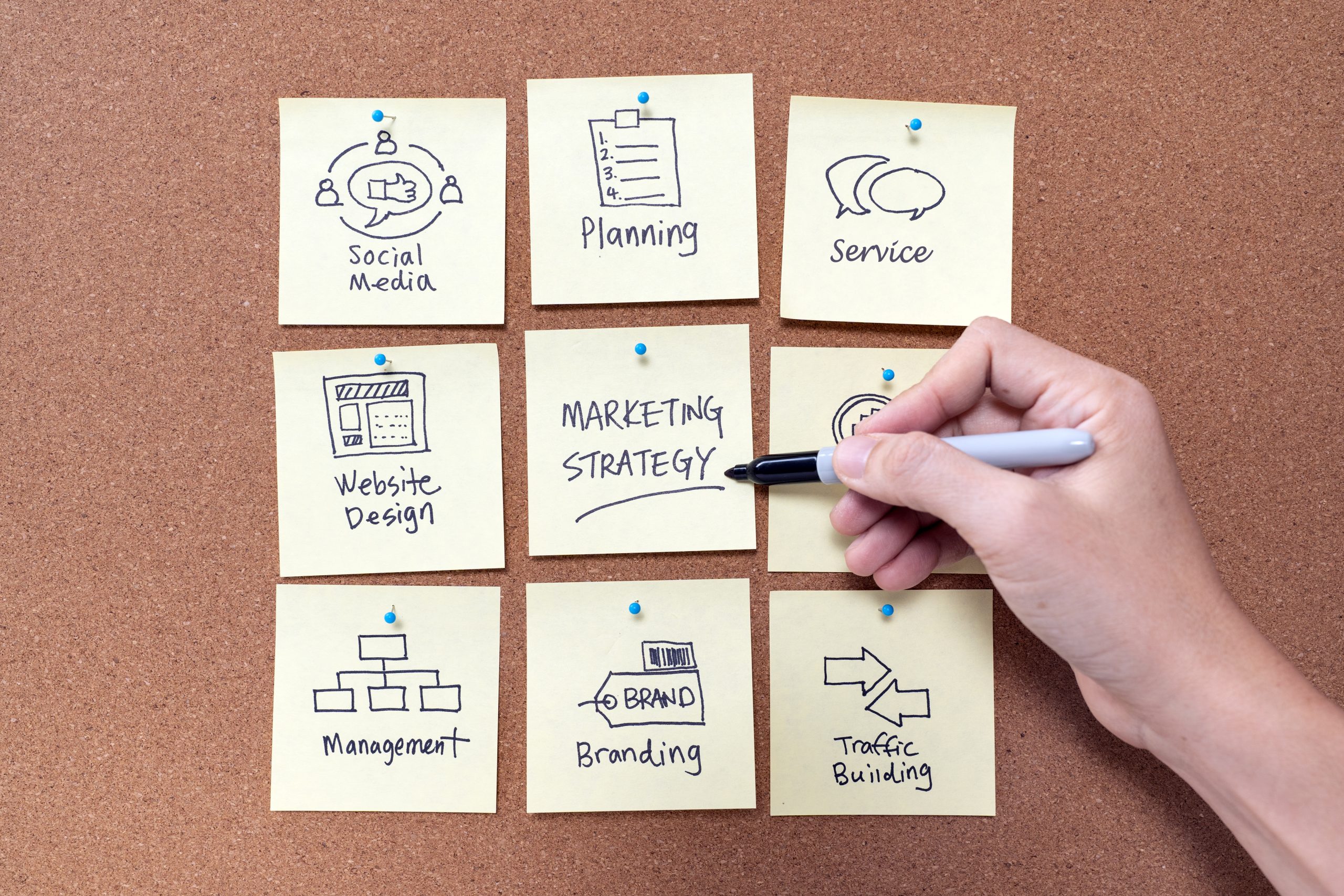Businesses have more options than ever to reach potential customers, but so do their competitors. This reality makes it crucial for companies to prioritize meaningful connections and customer loyalty, which is why audience-centric marketing matters more than ever. Rather than relying solely on traditional product-focused strategies, brands are shifting to an approach that emphasizes understanding and meeting the unique needs, values, and preferences of their audience. By placing customers at the heart of marketing, companies like Silesky Marketing can foster lasting relationships, increase engagement, and ultimately drive long-term success. Audience-centric marketing is no longer just an option; it’s the path forward for brands looking to connect deeply in a competitive world.
The Shift to Audience-Centric Marketing
Marketing has changed significantly over the years. What started as product-focused advertising has now evolved to center on customer experiences and preferences. Traditional methods prioritized product features and benefits, but audience-centric marketing flips this approach. Now, brands focus on their audience’s needs, values, and emotions. This shift reflects a transformation in consumer expectations: customers want more than products. They want meaningful interactions and solutions that fit their lives.
Audience-centric marketing prioritizes empathy and engagement. It requires a clear understanding of who the audience is, what they care about, and how they prefer to engage. By focusing on these factors, businesses make smarter decisions about where to invest time and resources. Some hallmarks of this shift include:
- Prioritizing value-driven messaging over traditional product pitches
- Building marketing strategies based on customer insights and feedback
- Creating personalized content that resonates with diverse audience segments
- Focusing on long-term relationship-building over short-term sales goals
This approach ensures customers feel valued and understood, which strengthens loyalty and boosts brand advocacy.
Understanding What Audience-Centric Marketing Entails
At its core, audience-centric marketing focuses on seeing marketing efforts from the audience’s perspective, not the product’s. It’s about engaging customers in ways that match their needs and preferences. This strategy goes beyond simply identifying target demographics. It’s about understanding their motivations, challenges, and values. Every marketing message, interaction, and channel focuses on creating an experience that feels relevant and engaging.
Audience-centric marketing includes several key principles:
- Empathy: Brands connect by addressing their audience’s needs and experiences.
- Personalization: They tailor content, messaging, and offers for different audience segments.
- Engagement: Ongoing dialogue and interaction help customers feel heard.
- Relevance: Content and campaigns deliver real value to customers.
- Transparency: Being open about brand values builds trust with the audience.
By adopting an audience-centric approach, brands create authentic connections. This attracts new customers and builds lasting relationships that are essential for retention.
Why Audience-Centric Marketing is Vital Today
With consumers bombarded by thousands of ads daily, standing out is a challenge. Audience-centric marketing helps solve this by creating content that resonates with customers. Today, this approach is essential, as audiences quickly ignore marketing that feels impersonal or irrelevant.
Several factors make audience-centric marketing vital:
- Customer Choice: With more options available, customers are selective about the brands they support.
- Digital Noise: The average person sees thousands of marketing messages daily; audience-centric content cuts through better.
- Demand for Personalization: Modern customers expect brands to speak to them individually, not as part of a mass audience.
- Transparency and Authenticity: People engage more with brands they view as honest and transparent.
- Increased Competition: Growing competition in digital spaces requires unique, audience-focused approaches.
This customer-first approach helps brands stand out and aligns with evolving consumer expectations. It makes customers feel valued and understood, which drives engagement and builds lasting loyalty.
Key Components of Audience-Centric Marketing
A successful audience-centric marketing approach has a few essential components. Each ensures the brand connects authentically with the audience:
- Data-Driven Insights: Gathering data helps businesses understand preferences and behaviors, allowing a tailored approach.
- Personalized Content: Messages feel personal and relevant to individuals, whether through emails, social media, or ads.
- Engagement Opportunities: Encouraging feedback, interaction, and dialogue keeps customers feeling connected and invested in the brand.
- Emphasis on Customer Values: Marketing that aligns with customer values fosters a deeper bond.
- Cross-Channel Consistency: Delivering a cohesive experience across platforms enhances brand perception.
- Proactive Problem Solving: Anticipating audience needs and addressing potential issues builds trust and satisfaction.
Each component creates a brand experience that feels personal and memorable. When done well, customers feel the brand truly understands them.
Benefits of Audience-Centric Marketing
An audience-centric marketing strategy offers many tangible benefits beyond brand awareness. By prioritizing the audience, businesses see improved engagement, higher customer satisfaction, and enhanced loyalty. Here’s how audience-centric marketing pays off:
- Increased Engagement: Personalized, relevant content captures attention more effectively.
- Customer Loyalty: A customer-first approach makes clients feel valued, increasing repeat business.
- Enhanced Conversion Rates: Content that speaks to audience needs is more likely to convert.
- Stronger Brand Reputation: Brands that align with customer values are more trusted.
- Reduced Churn: Customers who feel understood are less likely to switch to competitors.
- Better Word-of-Mouth: Satisfied customers often share positive experiences with others.
These benefits show why audience-centric marketing is essential for brands looking to grow and remain competitive.
Implementing an Audience-Centric Approach
Shifting to an audience-centric approach is challenging but worthwhile. Here’s a basic roadmap for making this transition:
- Gather Data: Use surveys, customer feedback, and analytics to understand audience demographics and preferences.
- Define Audience Segments: Create segments based on demographics, behavior, and interests for more personalized messaging.
- Engage with Customers Regularly: Build relationships by interacting with audiences on social media, email, and other platforms.
- Create Tailored Content: Develop content that speaks to specific needs, from blog posts to personalized offers.
- Analyze and Adapt: Continuously evaluate performance and adjust strategies based on feedback and data insights.
- Invest in Automation Tools: Automation helps deliver timely, relevant information to customers.
Following these steps, businesses can shift to a more audience-focused strategy, enhancing relationships and driving results.
Audience-Centric Marketing and Customer Retention
Retaining customers is as important as attracting new ones, and audience-centric marketing plays a key role in both. Customers who feel understood are more likely to stay loyal to a brand. Focusing on audience needs and interests creates a connection that traditional marketing often misses.
Audience-centric strategies that boost retention include:
- Personalized Communication: Regularly engage with customers through messages that reflect their preferences and past interactions.
- Loyalty Programs: Reward loyal customers in ways that matter to them.
- Consistent Quality Content: Continue delivering valuable, engaging content that keeps audiences interested.
- Frequent Feedback Channels: Allow customers to voice opinions and show that their feedback is valued.
By focusing on retention, brands enjoy the benefits of long-term relationships and a stable customer base.
Measuring Success in Audience-Centric Marketing
Measuring success is essential to understanding the impact of audience-centric marketing. Metrics provide insights that can inform future campaigns and adjustments. Key metrics to consider include:
- Engagement Rates: Track likes, shares, and comments to gauge audience response.
- Customer Retention: Measure repeat business to see if customers stay engaged.
- Conversion Rates: Track how many interactions result in actual sales.
- Customer Feedback: Regularly assess feedback to ensure marketing efforts align with audience expectations.
- Net Promoter Score (NPS): This measures customer loyalty and likelihood of recommending the brand.
These metrics allow brands to refine strategies, ensuring they remain aligned with customer needs.
Wrap-up
Audience-centric marketing is crucial in today’s competitive market. By focusing on the audience’s unique needs, values, and preferences, businesses foster stronger relationships, drive engagement, and build long-lasting loyalty. This shift requires commitment, but the rewards make it a worthwhile investment. For agencies like Silesky Marketing, prioritizing the audience is more than a strategy. It’s the foundation for sustainable growth and success in a customer-first world.












